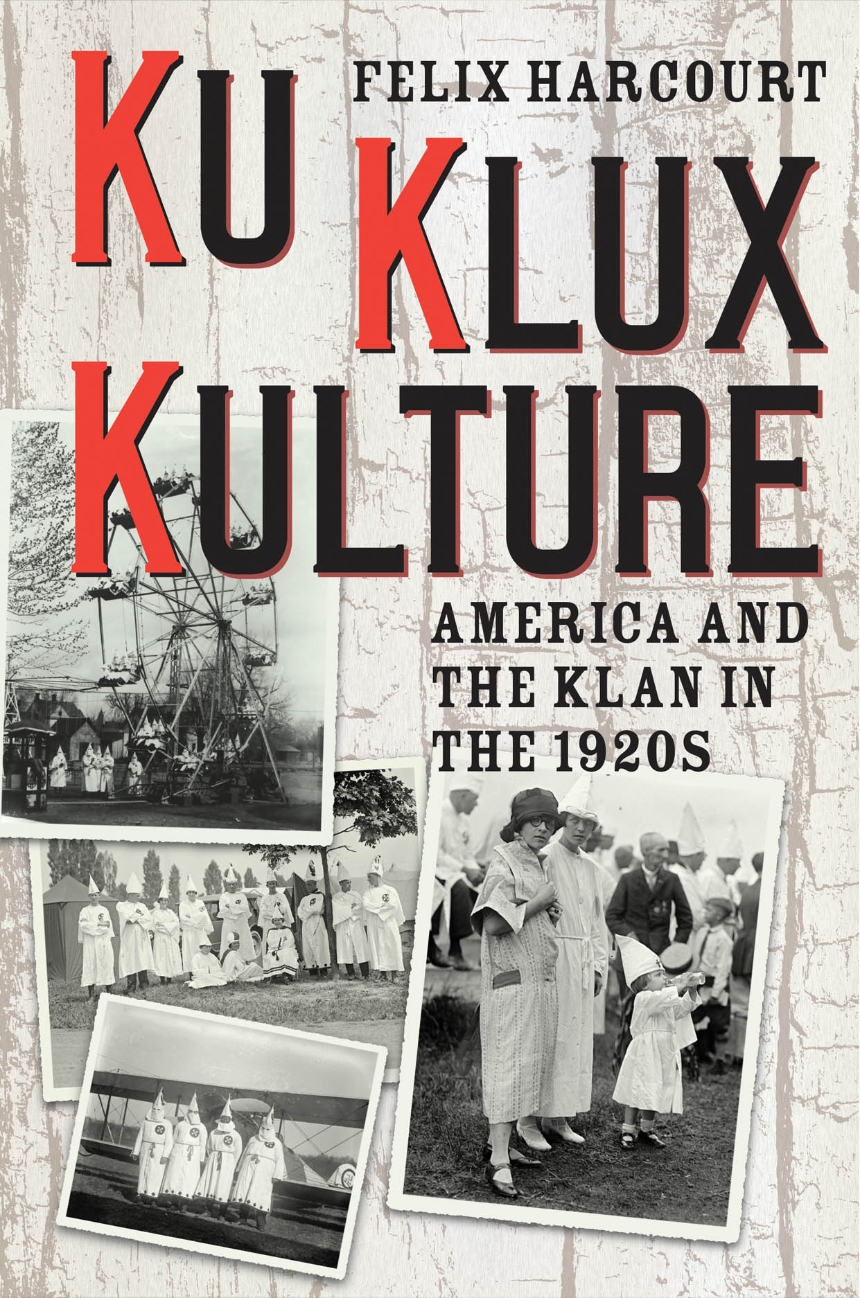Ku Klux Kulture
America and the Klan in the 1920s
In popular understanding, the Ku Klux Klan is a hateful white supremacist organization. In Ku Klux Kulture, Felix Harcourt argues that in the 1920s the self-proclaimed Invisible Empire had an even wider significance as a cultural movement.
Ku Klux Kulture reveals the extent to which the KKK participated in and penetrated popular American culture, reaching far beyond its paying membership to become part of modern American society. The Klan owned radio stations, newspapers, and sports teams, and its members created popular films, pulp novels, music, and more. Harcourt shows how the Klan’s racist and nativist ideology became subsumed in sunnier popular portrayals of heroic vigilantism. In the process he challenges prevailing depictions of the 1920s, which may be best understood not as the Jazz Age or the Age of Prohibition, but as the Age of the Klan. Ku Klux Kulture gives us an unsettling glimpse into the past, arguing that the Klan did not die so much as melt into America’s prevailing culture.
Ku Klux Kulture reveals the extent to which the KKK participated in and penetrated popular American culture, reaching far beyond its paying membership to become part of modern American society. The Klan owned radio stations, newspapers, and sports teams, and its members created popular films, pulp novels, music, and more. Harcourt shows how the Klan’s racist and nativist ideology became subsumed in sunnier popular portrayals of heroic vigilantism. In the process he challenges prevailing depictions of the 1920s, which may be best understood not as the Jazz Age or the Age of Prohibition, but as the Age of the Klan. Ku Klux Kulture gives us an unsettling glimpse into the past, arguing that the Klan did not die so much as melt into America’s prevailing culture.
272 pages | 11 halftones | 6 x 9 | © 2017
History: American History
Political Science: Race and Politics
Sociology: Collective Behavior, Mass Communication
Reviews
Table of Contents
1 Ordinary Human Interests
2 White and White and Read All Over
3 Fiery Cross-Words
4 The Good, the Bad, and the Best Sellers
5 Good Fiction Qualities
6 Just Entertainment
7 That Ghastly Saxophone
8 PBS—The Protestant Broadcasting System
9 Invisible Umpires
Epilogue: The Most Picturesque Element
Notes
Glossary
Bibliography
Index
2 White and White and Read All Over
3 Fiery Cross-Words
4 The Good, the Bad, and the Best Sellers
5 Good Fiction Qualities
6 Just Entertainment
7 That Ghastly Saxophone
8 PBS—The Protestant Broadcasting System
9 Invisible Umpires
Epilogue: The Most Picturesque Element
Notes
Glossary
Bibliography
Index
